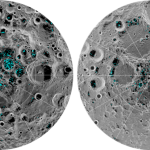A galaxy 11.3 billion light-years away appears filled with dark matter0
- From Around the Web, Space
- August 23, 2018
The finding bucks earlier research suggesting faraway galaxies lack the invisible stuff

The finding bucks earlier research suggesting faraway galaxies lack the invisible stuff

In the darkest and coldest parts of its polar regions, a team of scientists has directly observed definitive evidence of water ice on the Moon’s surface.

A new technique might one day help combat global warming

Citizen scientists, satellites and researchers solve the mystery of new purple lights in the sky. The lights, called STEVE, provide scientists insight into Earth’s magnetic field.

It’s been a year since the total solar eclipse of August 21, 2017, captured millions of imaginations as the moon briefly blotted out the sun and cast a shadow that crisscrossed the United States from Oregon to South Carolina.

The space company of billionaire Microsoft co-founder Paul Allen on Monday unveiled details of medium-lift rockets and a reusable space cargo plane it is developing, injecting more competition into the lucrative launch services market.

The minute-long video purports to show a space craft eerily hovering in the distance over Lake Norman near Charlotte, North Carolina. And while buzz on the video swings from claims of hoaxing to apparent belief, one iconic airship has claimed responsibility: the Goodyear Blimp

Calls grow for ban on fully autonomous weapons, following NGO coalition report

Are we alone? Unfortunately, neither of the answers feel satisfactory. To be alone in this vast universe is a lonely prospect. On the other hand, if we are not alone and there is someone or something more powerful out there, that too is terrifying.

Water has numerous anomalous properties, many of which remain poorly understood. One of its intriguing behaviors is that it exhibits the so-called temperature of maximum density (TMD) at 3.98 degrees Celsius (39.16 degrees Fahrenheit). In a new study published in the journal Physical Review Letters, researchers at New York University provide experimental evidence for previously unknown abrupt changes in proton (H+) transfer kinetics in water at this temperature.